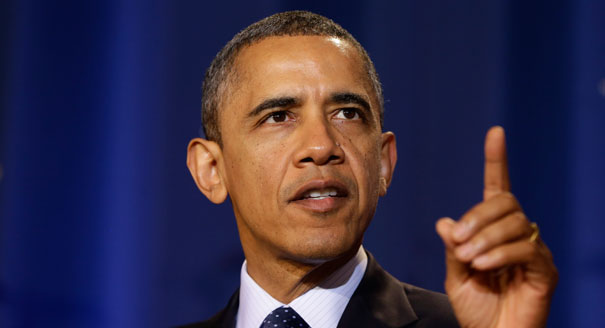Not Even 1% Of Those Who Lost Insurance Will Pay More For Obamacare

The Article: If canceled, not even 1% will pay more for Obamacare: Study by Dan Mangan in CNBC.
The Text: Just a “tiny fraction” of Americans stand to lose their current health insurance plan and pay more for coverage under Obamacare, a new study said Thursday as concern over canceled policies remained a pressing issue for the White House.
The analysis found that only 0.6 percent of people under age 65 are at risk of losing their individual plan and having to pay higher premiums for coverage approved by the Affordable Care Act, according to Families USA, the consumer health advocacy group that issued the study.
Acknowledging that the study was an effort to counter a steady stream of bad publicity for the administration about canceled policies, Families USA Executive Director Ron Pollack added that 1.5 million people possibly losing insurance and paying more for new coverage is “not trivial.”
But, he said, “it’s important to keep a perspective … that number is a tiny fraction of the 65 million nonelderly people with pre-existing conditions who will get coverage under the Affordable Care Act.”
“I do think this issue has been blown out of proportion,” said Pollack, whose group supports President Barack Obama’s decision last week to let insurers maintain ACA-noncompliant plans with current customers for at least a year.
The Families USA study also found that 71 percent of the 15.2 million people with individual polices will be eligible for Medicaid coverage or government subsidies to offset the cost of ACA-compliant policies because their household income is below 400 percent of the federal poverty index.
“This is very significant,” said Pollack of those 10.8 million people, who can use the subsidies to buy coverage from HealthCare.gov and the state-run exchanges. “Those families will see significant reductions in their costs for premiums, often in the thousands of dollars.”
(Read more: Obamacare “plane crash” was feared: official)
Families USA’s finding of 0.6 percent was based on data showing that only 5.7 percent of the nonelderly population have individual—as opposed to group—health coverage and that just 29 percent of that group have family incomes that are higher than the limits for subsidies. And just one-third of that smaller group would be expected to remain in the individual market for longer than a year, given its historical turnover.
Pollack’s group has been a key backer of the ACA and its implementation.
The Obama administration has long contended with two public relations problems in connection with its health-reform effort: Most people have a negative view of the law, particularly when it’s called Obamacare, according to surveys, including a CNBC poll in September. And sizable portions of the population remain ignorant about its details, according to surveys conducted by the Kaiser Family Foundation and the Commonwealth Fund.
In addition to establishing minimum benefits for insurance plans, the ACA requires nearly all Americans to have coverage by March 31, 2014, or face a tax penalty. For the minority of people not covered by employer plans, Medicare, Medicaid or veterans’ plans, the law established government-operated exchanges to sell individual coverage from competing insurers and authorized a Medicaid expansion to more lower-income people.
The federal exchange HealthCare.gov flopped on launch, when widespread software glitches prevented people from logging on, much less enrolling.
The administration was slammed when many with individual plans got cancellation notices from their insurers, which said the plans were not ACA-compliant. It was widely noted that those people were directed to HealthCare.gov, which was not functioning well.
The president bowed to public pressure last week, saying he would allow customers of noncompliant plans to maintain coverage for the next year. But a number of insurance commissioners are not authorizing that waiver in their own states.
During his conference call with reporters Thursday to discuss the Families USA report, Pollack had a request of media outlets.
“If you continue to cover” the issue of plan cancellations, he said, “keep it in perspective … of the overall impact of the Affordable Care Act.”
For example, Pollack said, new insurance plans are barred both from denying coverage to those with pre-existing conditions or from instituting yearly or lifetime caps on benefits.
“Will everyone get lower premiums?” he asked. “There’s no question that when people get better coverage, it’s likely to mean they will pay somewhat higher premiums. You don’t get something for nothing, but … when you get better coverage, you end up paying less on the back end.
“If you’re eligible for subsidies … that can more than make up for the increased premiums,” Pollack said.
In a section titled “Robust Financial Assistance,” the Families USA report noted that a Kaiser Family Foundation study found that for those who purchase through the Obamacare exchanges and qualify for premium tax credit subsidies, “the average tax credit will be $5,548 per family, which would cut premiums by 66 percent.”
At the lowest income levels, the Kaiser study said, “Medicaid will offer coverage with no premiums, with comprehensive benefits, charging co-payments that are no more than nominal.”
Twenty-one states are not expanding Medicaid, despite being allowed to under the ACA. Most other states are expanding or considering it.









